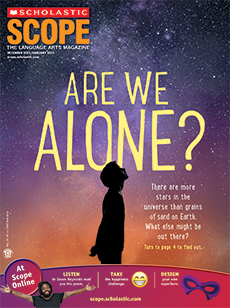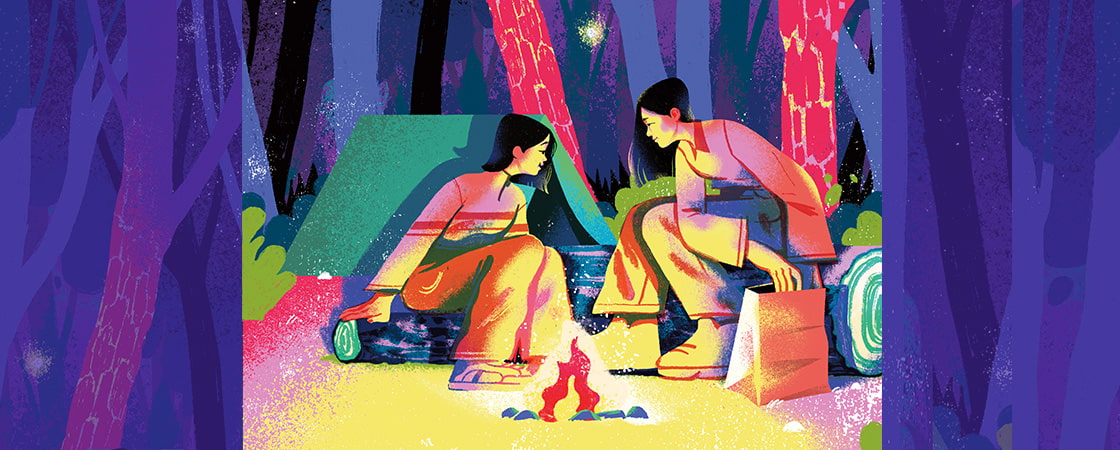1. How much time passes in this poem? In other words, does the poem describe events that happen over a period of minutes, hours, days, or longer? Generally speaking, the poem describes events that take place over several minutes, from when the speaker’s mom asks her daughter to find a stick to when the mom pulls the marshmallow out of the bag. Students might note, however, that the first stanza describes how the speaker’s mom would build fires and roast fish and grasshoppers when she was a child. So taking the first stanza into account, the poem describes events that happen over a period of years, events that happen over a period of minutes, and also events that happen years apart.
2. What do the words just think at the very beginning of the poem tell you about the speaker’s attitude or feelings about what her mother did as a child? The words just think tell you that the speaker is amazed or even a bit shocked that her mother built fires and roasted grasshoppers when she was a child.
3. In the second stanza, the speaker says, “I see a brown bag/by her feet—/could it be?” What does the speaker think might be about to happen? The speaker thinks the bag might be full of grasshoppers and that her mom might be about to pull one out for them to roast and eat.
4. In the third stanza, the speaker describes the fire as “spitting ready.” What does she mean? She means that the fire is hot and burning well—so well that it is spitting, or shooting out, sparks. She is saying that the fire is hot enough to roast marshmallows (or grasshoppers) over.
5. Consider the words the speaker uses to describe the marshmallow: big, fat, and luscious. Why do you think the poet chose these words in particular? It is likely the poet chose these words because she is developing the idea that the mom might be about to pull a grasshopper out of the bag, and big, fat, and luscious could describe a marshmallow or a grasshopper. What’s more, these words help create drama, because for those not accustomed to eating grasshoppers, the description of a grasshopper as big, fat, and luscious probably makes the idea of eating it all the more unappealing.
6. Why might the poet have made the choice to put the last word of the poem, marshmallow, on its own line? The poet likely put marshmallow on its own line to draw out the suspense at the end of the poem. When you read a poem, you naturally pause slightly at the end of each line, so by putting a line break before the last word, the poem creates a beat of silence (like a held breath or an inhale) before revealing what the mom pulls out of the bag.
7. Were you surprised by the poem’s ending? Did you find it funny? Answers will vary.
8. What did the author’s note about the poem help you understand? Did it answer any questions you had about the poem? Students are likely to offer that the author’s note helped them understand why the speaker’s mother roasted and ate grasshoppers as a child. Students might also offer that the author’s note helped them understand that Janet Wong wrote the poem about her own experience—in other words, that the poem is autobiographical.


